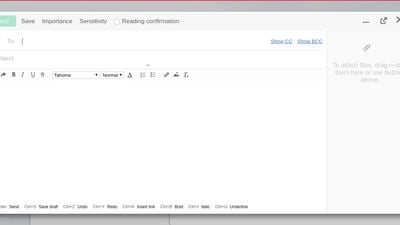

Some hosts will limit mailboxes, for example, 500MB.
Smaller storage space required (assuming emails are deleted after download). An Internet connection is only required for sending and receiving email. Mail is stored locally and can be accessed without an internet connection. Your emails will sync across multiple devices whenever you log into your email server from your tablet or smartphone. 
It will keep any replies you make, read status, and record all other actions. IMAP won’t delete the email from the server after downloading it. Whenever you log into an email client configured with the IMAP protocol, it will mirror any changes you make to the email server. E.g., adding sent emails, reading emails, and removing deleted emails.
Update new changes back to the remote server. Retrieve changes and content and store it locally. Many POP clients have an option to leave a copy of your messages on the server, but this is not the default behavior and still would not show subsequent changes or sent messages. 
Anyone accessing your email from another location will not know what you have done. If you delete, copy, move or send messages, they will exist only on your local computer. POP3 will download any messages you have from the mail servers.
Your email client will disconnect from the remote server. Any emails retrieved from the server will be deleted from that server. Your emails will be stored locally by your email client. Your email client will retrieve the mail from the remote server. Your email client will connect to the remote server where the emails are stored. Your email client is instructed to check mail (either manually or automatically). The differences between POP and IMAP are evident in their respective workflow processes. IMAP was created in 1986, but at that time, we don’t think they anticipated how well it fits in with the current “cloud-based” trend that has developed over recent years. POP3 is the current version created in1988 and remains one of the most popular email protocols. POP1 was first created in1984 and POP2 in early 1985/. POP3 is a protocol that has been around for a very long time. POP is the acronym for Post Office Protocol.īoth of these protocols are used for the processing of the transfer of emails between an email server and a mail client (such as Mozilla Thunderbird, Microsoft Outlook, Eudora, or your default smartphone email app). 
IMAP is the acronym for Internet Message Access Protocol. This will enable you to choose the best one. I will explain how POP and IMAP work in this article and their differences. If you have set up an email client such as Outlook or Thunderbird, or an email app on your smartphone, you will almost certainly have to choose between POP and IMAP in the settings. The difference in how IMAP and POP work.








 0 kommentar(er)
0 kommentar(er)
